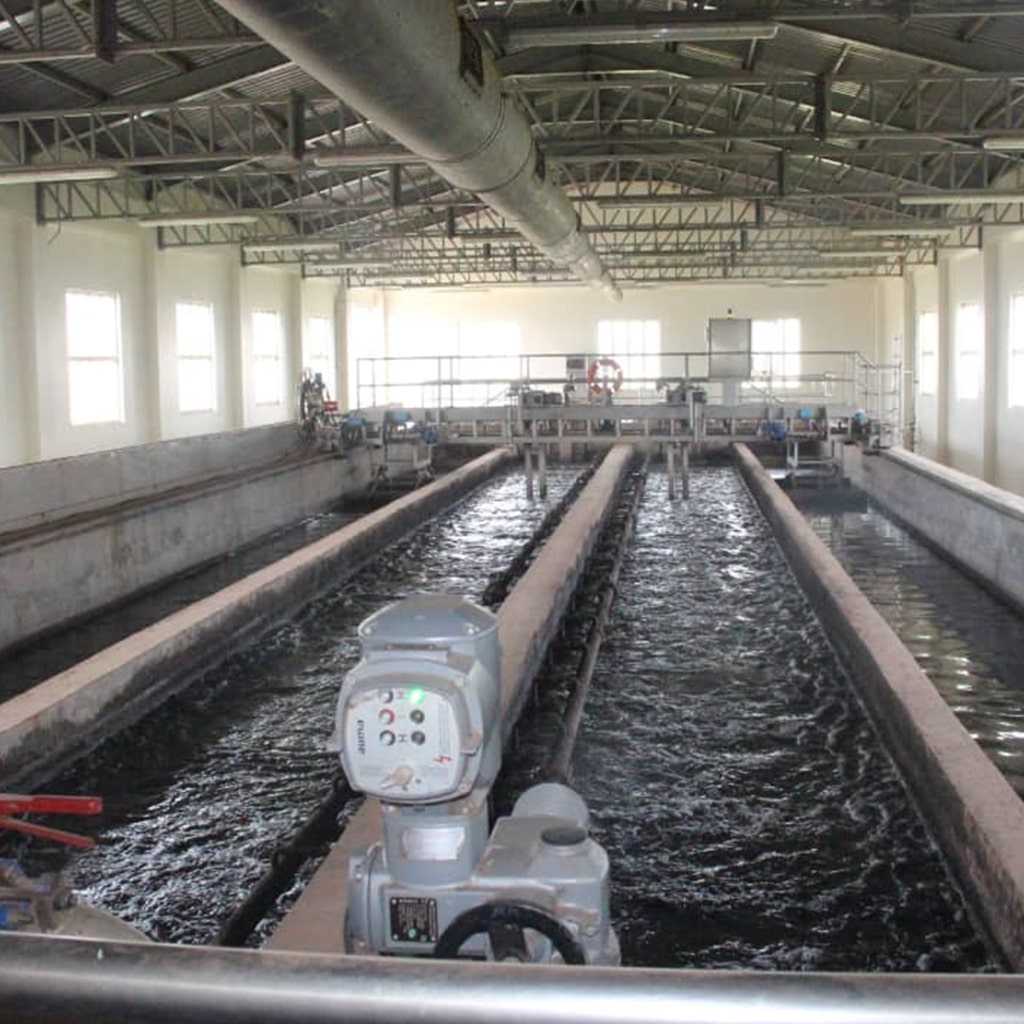The Government of Uganda through the National Water and Sewerage Corporation (NWSC) is putting final touches to East Africa’s largest wastewater treatment plant. The Bugolobi-Nakivubo wastewater treatment plant encompasses an ultra-modern sewage treatment plant in Bugolobi, a sewage pre-treatment plant in Kinawataka, a sewerage pumping station on Kibira road and 31km of sewer network. The plant comes six years after the commissioning of the Lubigi sewage treatment plant in 2014.
According to National Water and Sewerage Corporation’s Managing Director, Dr Eng. Silver Mugisha the plant is about 99% complete and in operation. Pending works at the plant include; completion of biogas digesters, greening the plant and landscaping works.
Also Read: Upgrade works at Rooiwal Wastewater Treatment Works in South Africa Good Progress
East Africa’s largest wastewater treatment plant
“The plant will treat up to 45 million liters of waste water daily and generate over 630kw of electricity using biogas. It will also help to clean Kampala city by diverting and treating waste water from the heavily polluted Nakivubo channel before releasing water into the Lake Victoria. The sewage effluent we release is of good quality and will help to conserve our environment. The plant will also produce manure to support the agriculture sector and generate over 630kw from biogas.” he said.
The plant uses nuisance free technology and bio-filters and will not smell. It will serve the needs of over 350,000 residents as well as the entire transient population in Kampala City. It will also serve Naguru, Ntinda, Nakawa, Bugolobi, Kyambogo, Kiwanataka, Banda, Kasokoso, Butabika and neighbouring areas.
This substantially extends piped sewerage services outside the Central Business
District, Old Kampala, Kiseka Market area, Kololo, Nakasero and the surrounding areas.
Conspicuously, this project is funded by the Government of Uganda with support from
the African Development Bank (AfDB), European Union (EU) and German funding through KfW.

